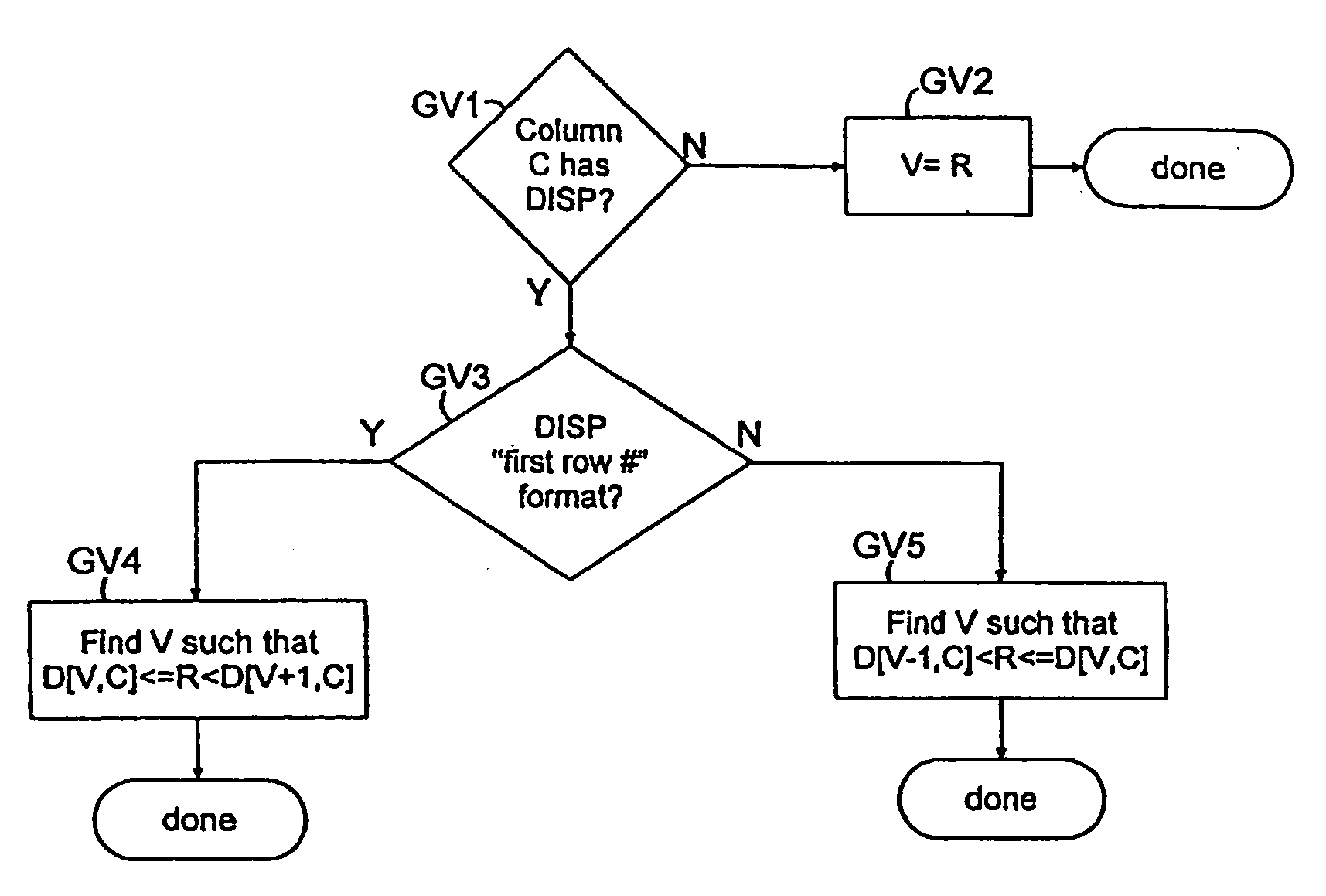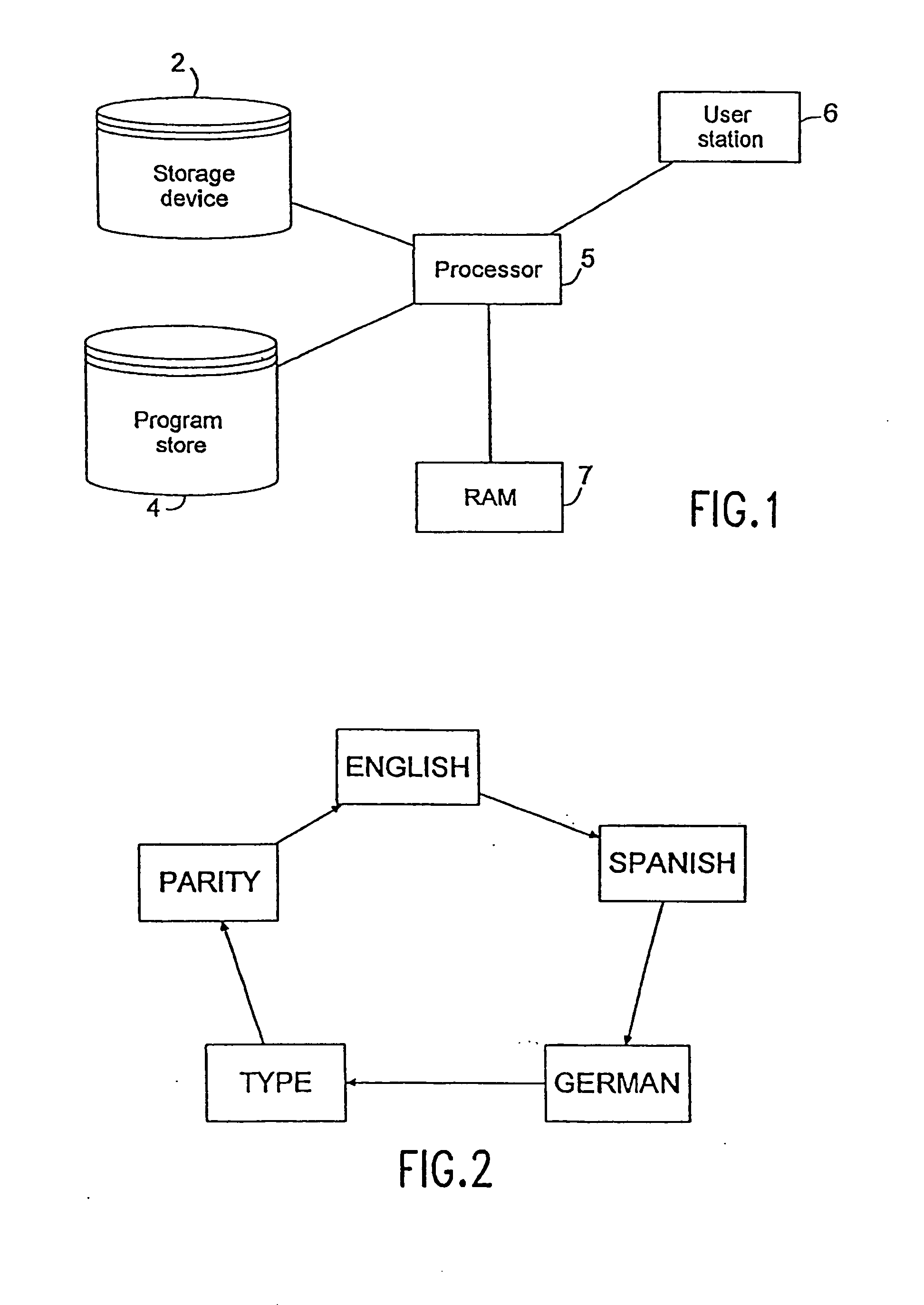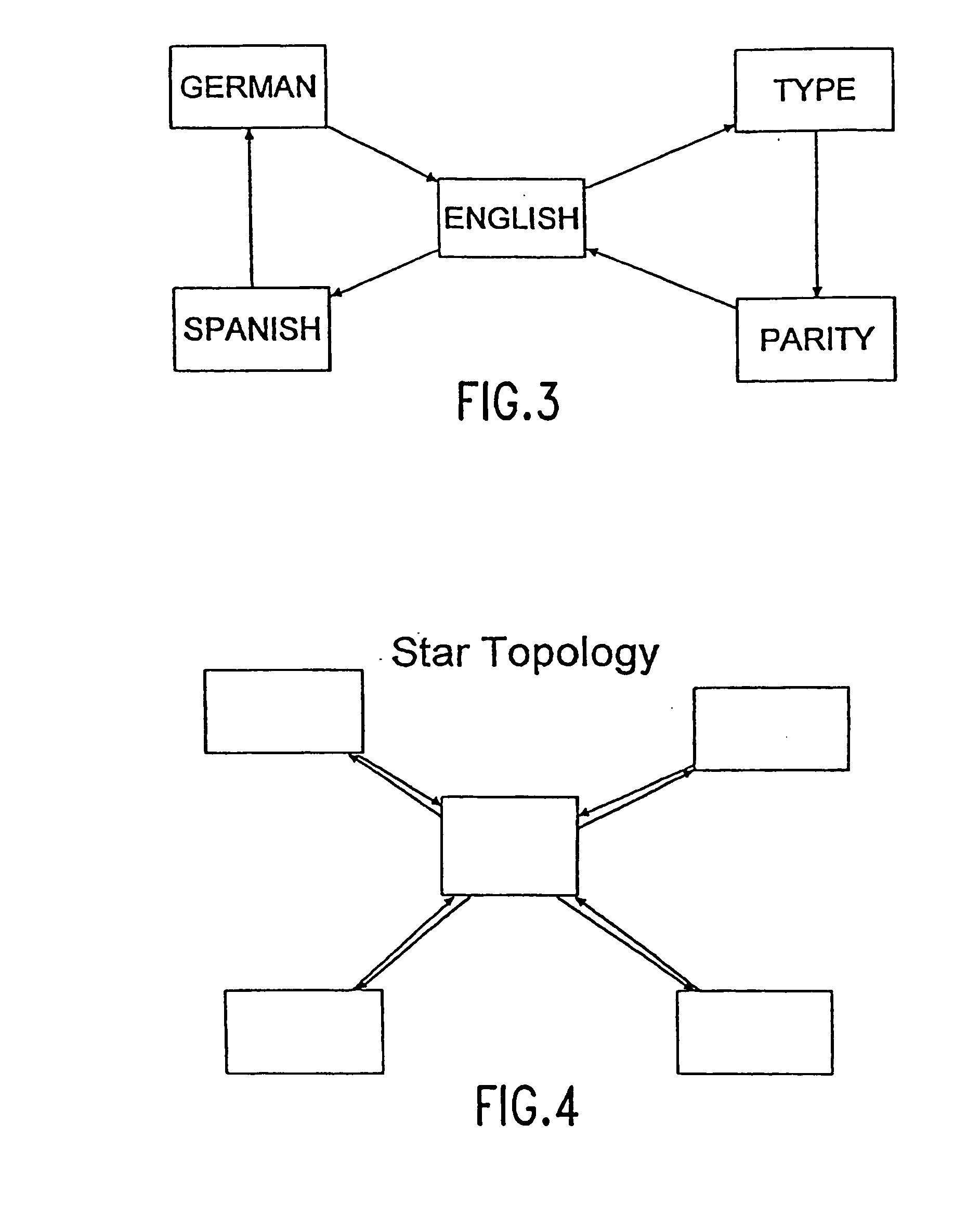Value-instance connectivity computer-implemented database
a database and value-in-instance technology, applied in the field of value-instance connectivity computer-implemented databases, can solve the problems of similar costs, more complicated counts for either column involved, and large so as to reduce the size of value and displacement lists, simplify the search of interior subfields, and simplify computation. the effect of addition
- Summary
- Abstract
- Description
- Claims
- Application Information
AI Technical Summary
Benefits of technology
Problems solved by technology
Method used
Image
Examples
Embodiment Construction
[0077]FIG. 1 illustrates the basic hardware setup of an embodiment of the present invention. Program store 4 is a storage device, such as a hard disk, containing the software that performs the functions of the database system of the present invention. This software includes, for example, the routines for generating the data structures of the underlying database and for reformatting legacy databases, such as those in record-oriented files, into those data structures. In addition, the software includes the routines for manipulating and accessing the database, such as query, delete, add, modify and join routines. Data files are stored in storage device 2 and contain the data associated with one or more databases. Data files may be formatted as binary images of the data structures herein or as record-oriented files. Program store 4 and storage device 2 may be different parts of a single storage device. The software in program store 4 is executed by processor 5, having random access memo...
PUM
 Login to View More
Login to View More Abstract
Description
Claims
Application Information
 Login to View More
Login to View More - R&D
- Intellectual Property
- Life Sciences
- Materials
- Tech Scout
- Unparalleled Data Quality
- Higher Quality Content
- 60% Fewer Hallucinations
Browse by: Latest US Patents, China's latest patents, Technical Efficacy Thesaurus, Application Domain, Technology Topic, Popular Technical Reports.
© 2025 PatSnap. All rights reserved.Legal|Privacy policy|Modern Slavery Act Transparency Statement|Sitemap|About US| Contact US: help@patsnap.com



